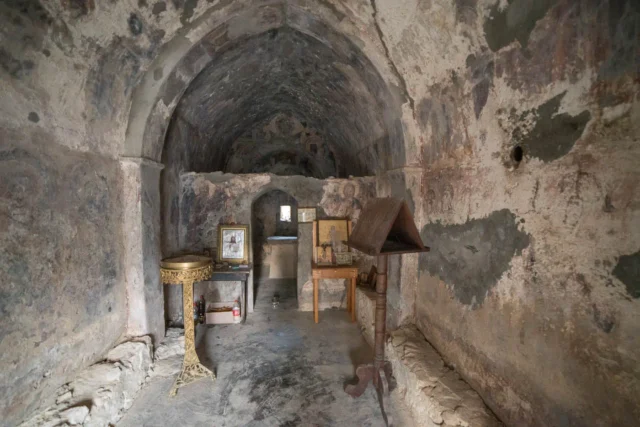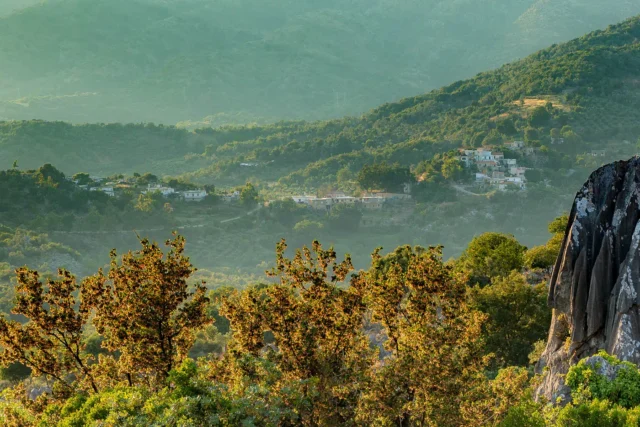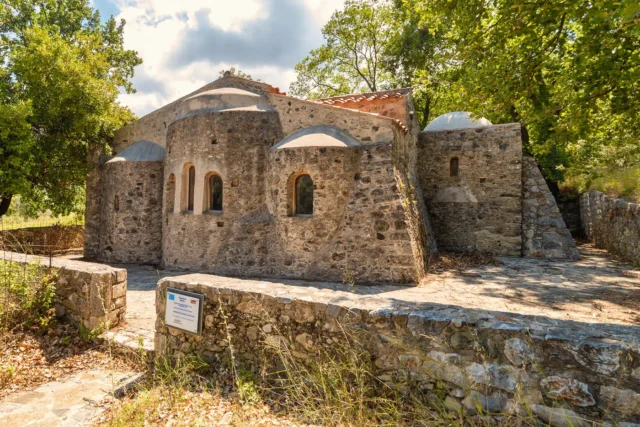
The Acropolis of Onithe
The Acropolis of Onithe, a Hellenistic-era fortress potentially dating back to 1400 BC, occupies a strategic position on the Onithe plateau at 638 meters elevation. The site features a pseudo-isodomic wall enclosing a right-angled area with 12-meter sides and remnants of a defensive tower. A steep, natural cliff forms the southern boundary of the acropolis. The site's location provided control over key passages and access to the settlement, underscoring its strategic significance in ancient Crete. Pottery finds suggest the possibility of earlier settlement phases dating back to the Proto-Minoan and Late Minoan periods. The acropolis, referred to locally as 'Ntapia,' meaning fortification, likely played a role in Cretan revolts in 1821, 1878, and 1897.

The Archaeological Site of Onithe
Onithe, an archaeological site near Goulediana in Rethymno, Crete, offers a glimpse into the island's history from the Neolithic period to the Venetian and Ottoman eras. Its strategic location on a plateau provided control over key passages and natural defenses. The site features ruins like the Acropolis with its pseudo-isodomic walls and tower, House A with its abundance of pottery and pithoi, an ancient spring and possible sanctuary, and a Paleochristian Basilica with well-preserved mosaics.
The ancient name of the city remains uncertain, with scholarly attempts to identify it as Osmida or Phalanna remaining inconclusive. It may have been an early settlement center for ancient Rhithymna. The site has yielded artifacts like pottery shards, a bronze zodiac, exquisite metalwork, and sculptures, providing evidence of its prosperity and cultural vibrancy throughout the Minoan, Archaic, Classical, Hellenistic, Roman, and Byzantine periods.








































































































































